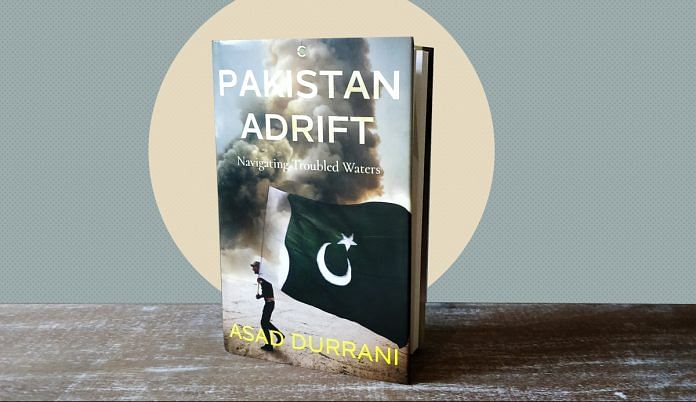Asad Durrani served as a three-star general in the Pakistani army and headed the ISI between 1990 and 1992.
Despite all the clamour about the T factor over the last many decades, ask anyone to explain it and the chances are that you will draw a blank. We all believe we know what it is but still struggle to define it. This reminds me of an American judge who, when asked to describe ‘pornography’, admitted that he could not, but ‘would recognise it when he saw it’. Nevertheless, there were times when attempts at decoding this marvel were seriously pursued, along with finding a generally acceptable definitely. I vaguely recall that it was the US State Department that once wrote of ‘deliberately targeting non-combatants to achieve a political objective’. It was a sound and succinct way of describing terrorism, and more or less ‘the minimum common denominator’ in most such efforts.
No wonder the quest had to be abandoned. States have also been targeting non-combatants, in fact, more than the non-state actors have. That definition would have made America the leading terrorist entity for nuking Hiroshima and Nagasaki, bombing civilians in Iraq and Afghanistan, and endless other acts. Britain’s bombardment of Dresden in World War II was a quintessential act of terror. Uri Avnery, an Israeli peace activist, makes the same points on this subject and gives some of the same examples in The Reign of Absurdiocy.
Unlike the search for a consensus on the definition, discourse on state terrorism was not abandoned till 9/11. Then the US took charge and got the state immunity from the tag. Hereafter, only NSAs could be called ‘terrorist’, although states on the ‘wrong side’, Pakistan and Iran, for example, but never India or Israel, could still be hauled up for ‘sponsoring terrorism’. In fact, a state may now declare any dissident group, even if it is fighting an oppressive regime or resisting occupation, ‘terrorist’, and all its actions against this nuisance become kosher. Consequently, terrorism as a label is now an invaluable instrument of state policy.
I have argued elsewhere in this book that India prefers to maintain the status quo in its relations with Pakistan. Confident in the knowledge that there are no concrete criteria on which to prove that cross-border terrorism has been purged (and even if there were, a terrorist act could always be stage-managed to refute the claim), India uses the ‘elimination of terrorism’ as a political ploy, a pre-condition to improve relations, and thus to keep bilateral ties frozen.
Sir Hillary Synott was a former British high commissioner in Pakistan. He later resigned from an assignment in Iraq in protest against his government’s policy. In 2004, speaking at a conference in the UK, he called terrorism a technique. As a soldier, I was gratified that a civilian this aspect of warfare. Years later, I learnt that a military man, the American General William Odom, had also stated, on C-Span, that ‘terrorism was a tactic and we [were] not going to win the war against it’. I recall that after 9/11, when we decided to wage a ‘war terrorism’, with GWOT as its unsexy acronym, some people were wondering how we were going to fight an ills like ignorance, bigotry, even terrorism, we should be declaring a crusade or Jihad—of course, in their exalted sense of a virtuous struggle. But since both these terms provoke religious sensitivities, courtesy of the Clash of Civilisations, their usage is now politically incorrect. Perforce, we have to continue to wage a ‘war on terror’. So there is no harm in looking at this phenomenon in the context of war.
Even in wars between conventional armies, as in the examples quoted above, of Hiroshima, Nagasaki and Dresden, non-combatants have been deliberately targeted. (The Indo–Pak wars of 1965 and 1971 were amongst the honourable exceptions.) But in asymmetric wars, waged between the state and the non-state actors (now defined as 4th or 5th generation warfare), this technique is nearly unavoidable. In fact, the NSAs who lack the ability to hurt the state security forces have no choice but to go for soft targets. In this contest, the dice are heavily loaded in their favour.
Context no qualms about disturbing public life. That gives them their first big advantage, which is access to an almost unlimited number of soft tar-
Anti-terrorist operations are the most complex form of sub-conventional warfare.7 Compared to fighting insurgents, partisans and resistance movements, we have far less experience in combating those who were once called ‘urban guerillas’ and now ‘terrorists’. Counter-terrorism, therefore, remains a largely unexplored discipline. While we have developed fairly workable doc rin so fight other forms of small wars, against the terrorists we only have some broad principles: good Intelligence, the ability to act with speed, and trying to win over ‘hearts and minds’.
This is an excerpt from the book, Pakistan Adrift: Navigating Troubled Waters by Asad Durrani. The book is published by Westland Publications.






